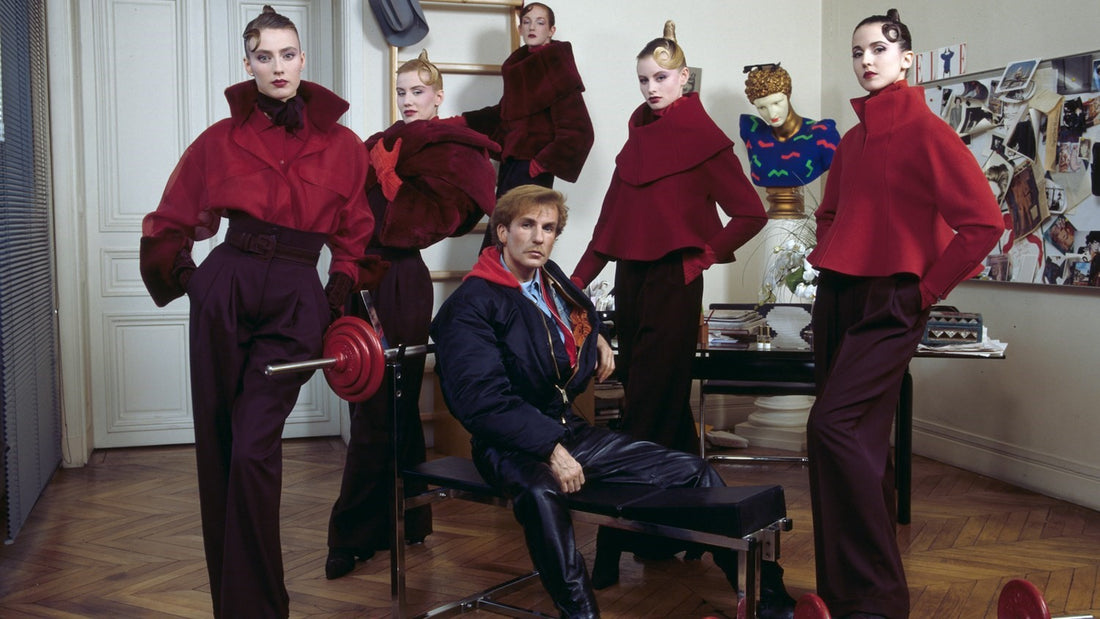Claude Montana was born in Paris to a German mother and a Catalan father. After a job at the Paris Opera, he moved to London, 17 and penniless, where he designed papier mâché jewelry covered in rhinestones. He was discovered by a stylist at Vogue who placed his pieces on the front cover. In 1973, Montana began designing at Mac Douglas, a leather house back in Paris where he shared a studio apartment on Avenue Wagram with Thierry Mugler, who would become a rival force in the power dressing of the 80s.
Montana produced his debut runway in 1976. His designs were characterized by extreme shoulders and cinched waists, finding inspiration in Dior’s 1940s New Look. Montana designed the entirety of the women’s collections himself, but they were expensive because of his sense of perfection and the luxuriousness of the materials he chose. Wanting to serve a wider consumer base, he created the State of Claude Montana line in 1992, but his house eventually declared bankruptcy in 1997. This and the suicide of his wife and muse Wallis Franken led Montana to completely seclude himself from the world of fashion.
Claude Montana was offered the head at Dior but ended up designing haute couture for Lanvin from 1990-1992. There, Montana was at his happiest, as designing couture was his dream and allowed him to express his most exuberant and fantastic visions. Although his collections for Lanvin awarded him two Golden Thimble awards, the reviews were exceedingly negative and devastated Montana. In the end, after refusing to design ready-to-wear for the house, he was fired.
Apart from being the leading force in the wide shoulders and power dressing of the 80s, Montana is most notable for his theatrical runway shows which would dominate each season. It is reported that people would bang on the doors to be let in and cut eye holes in the tents to see the shows. And out they came, “an army of Amazonians” in a flurry of colorful leathers, silks, and cashmere, the sight of which caused some women to break out into tears. Every aspect of the shows was intentional and calculated by Montana. He showed the models how to walk and pose. It is said that Claude Montana did not design clothes; he designed the whole woman. The Montana woman is assertive. She takes space, described as militant, but beautiful and with a powerful sense of self. This is the vision of Claude Montana, a man who had little outer glamour but whose sense of magic and fantasy continues to define women’s fashion. Montana, “faiseur de rêves.”









